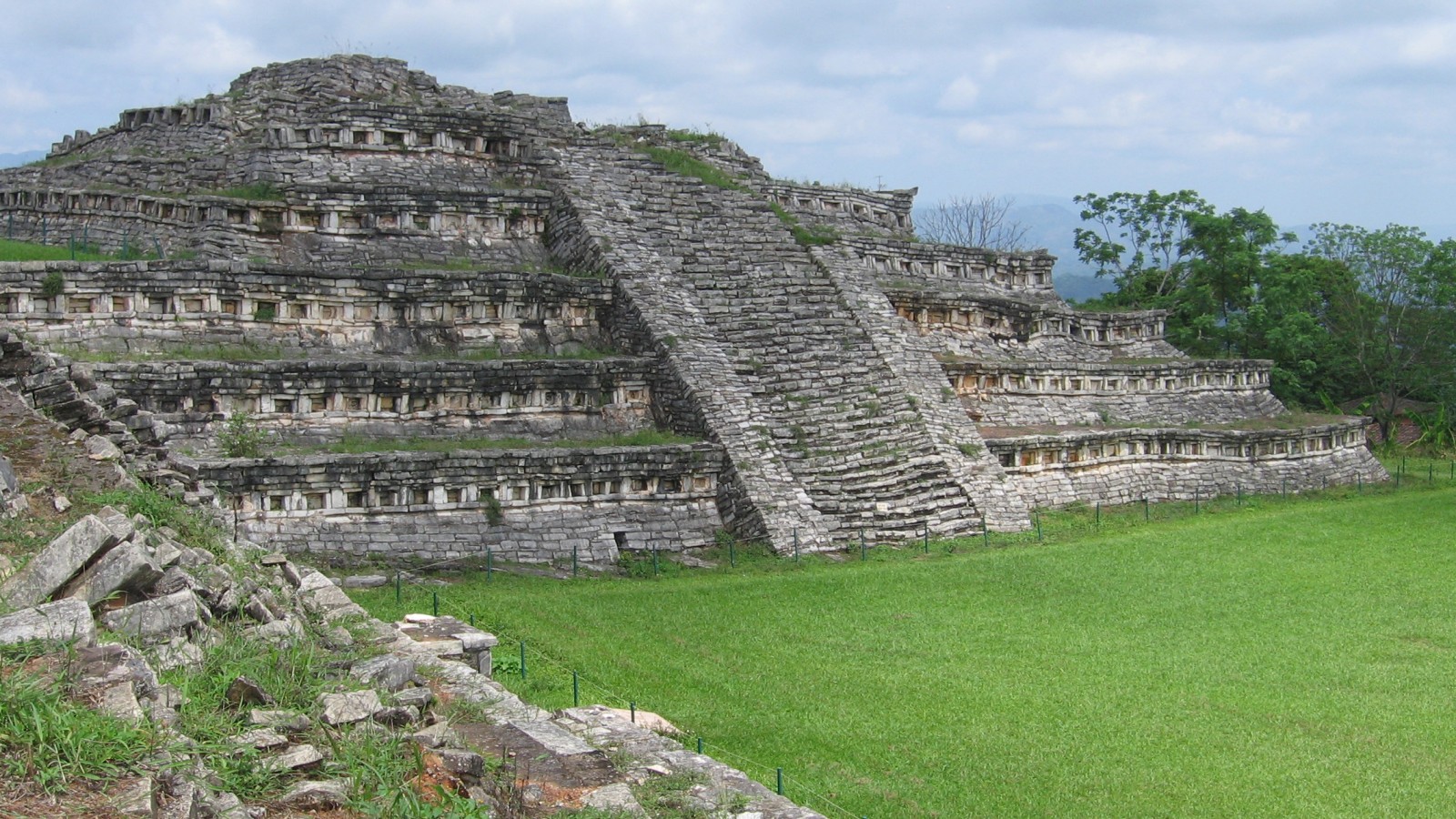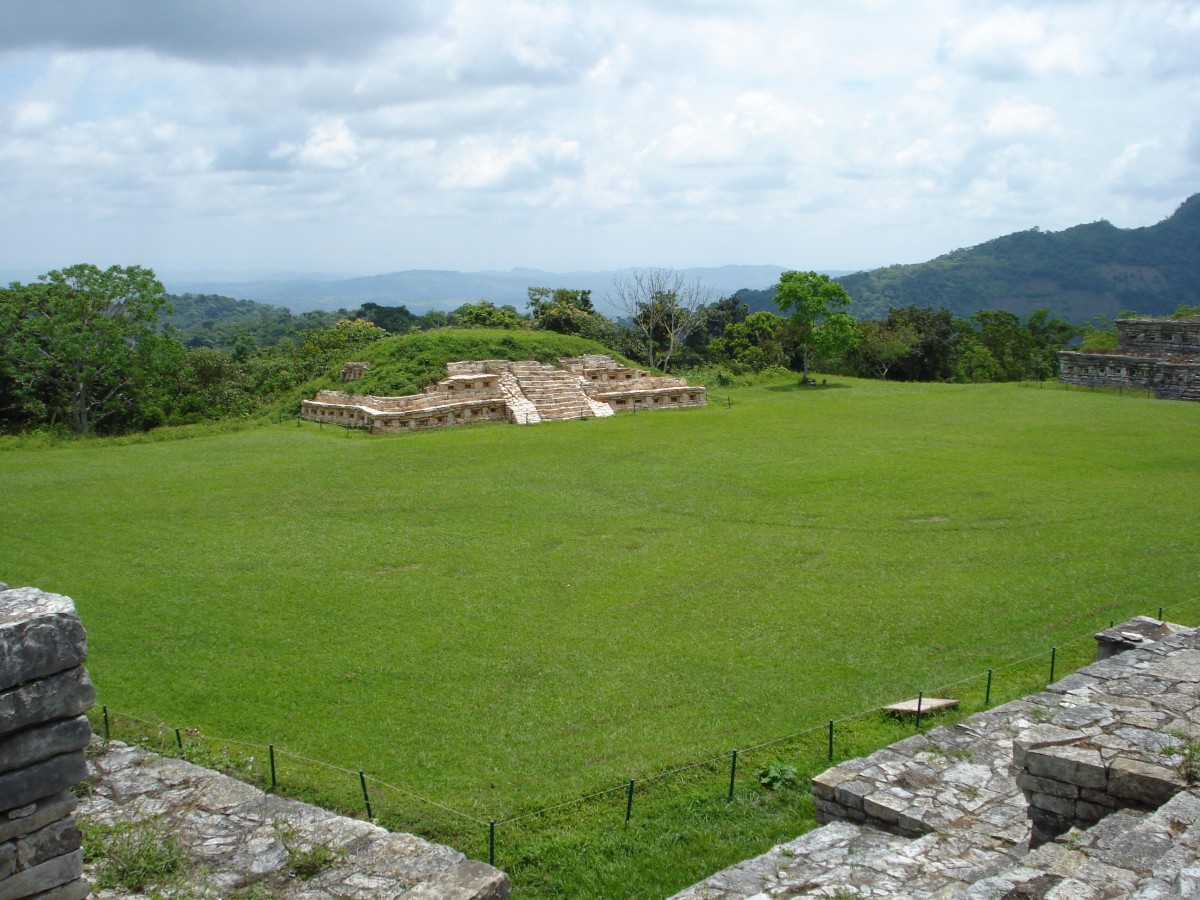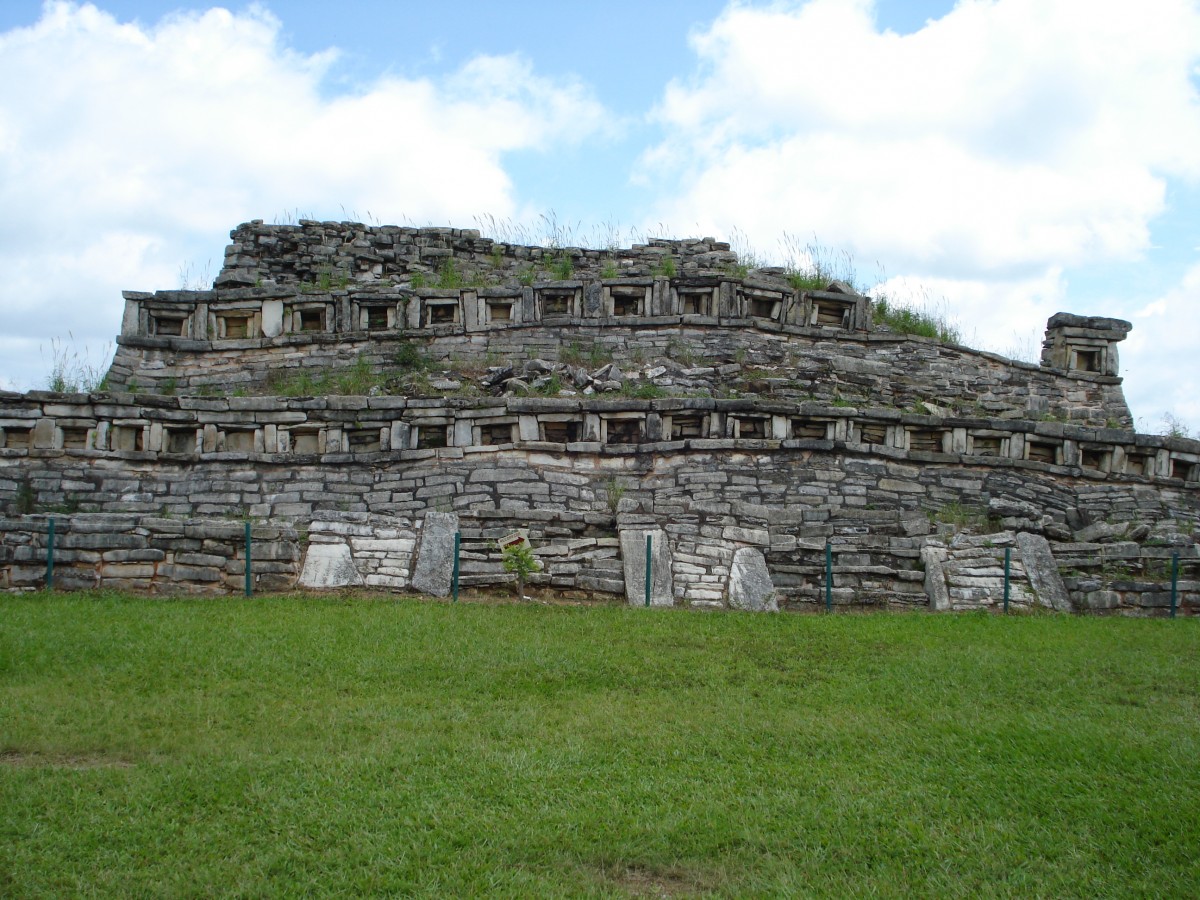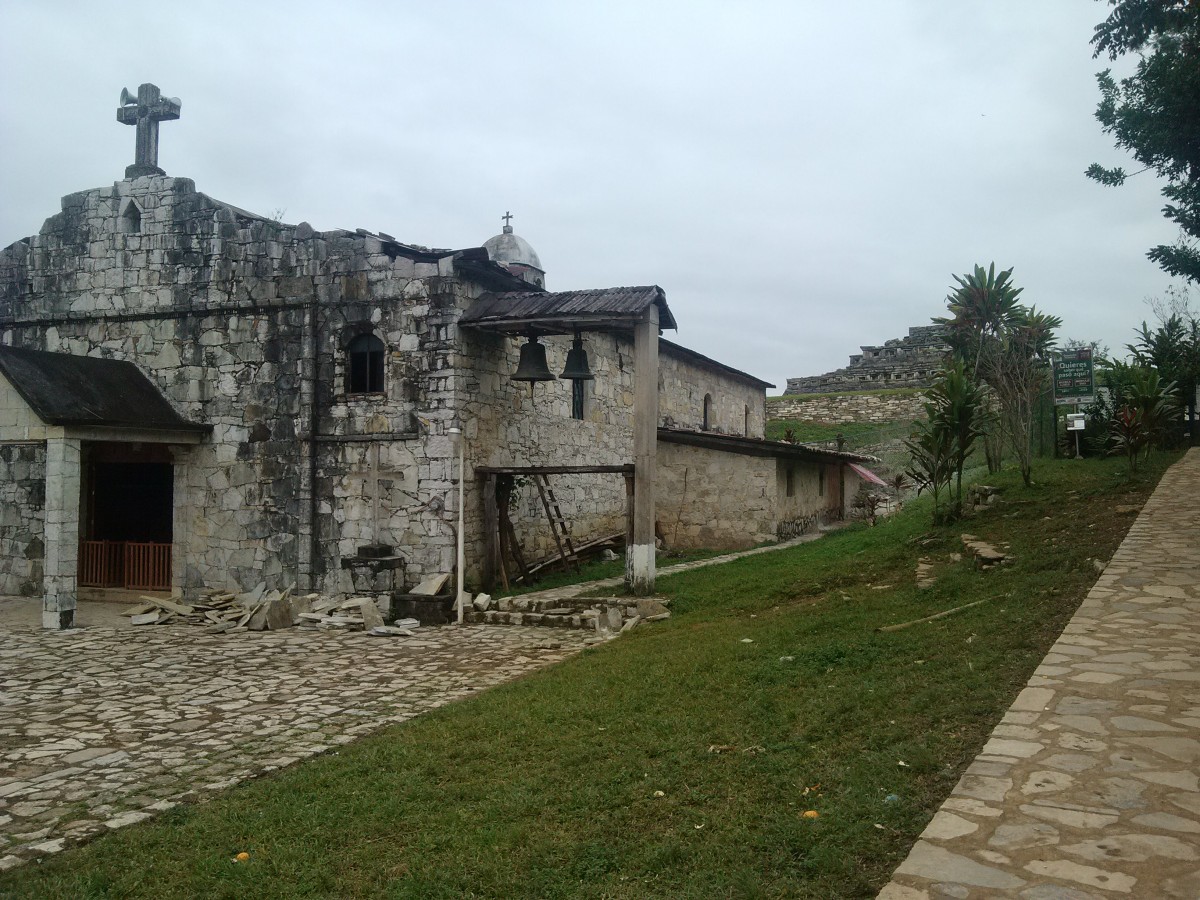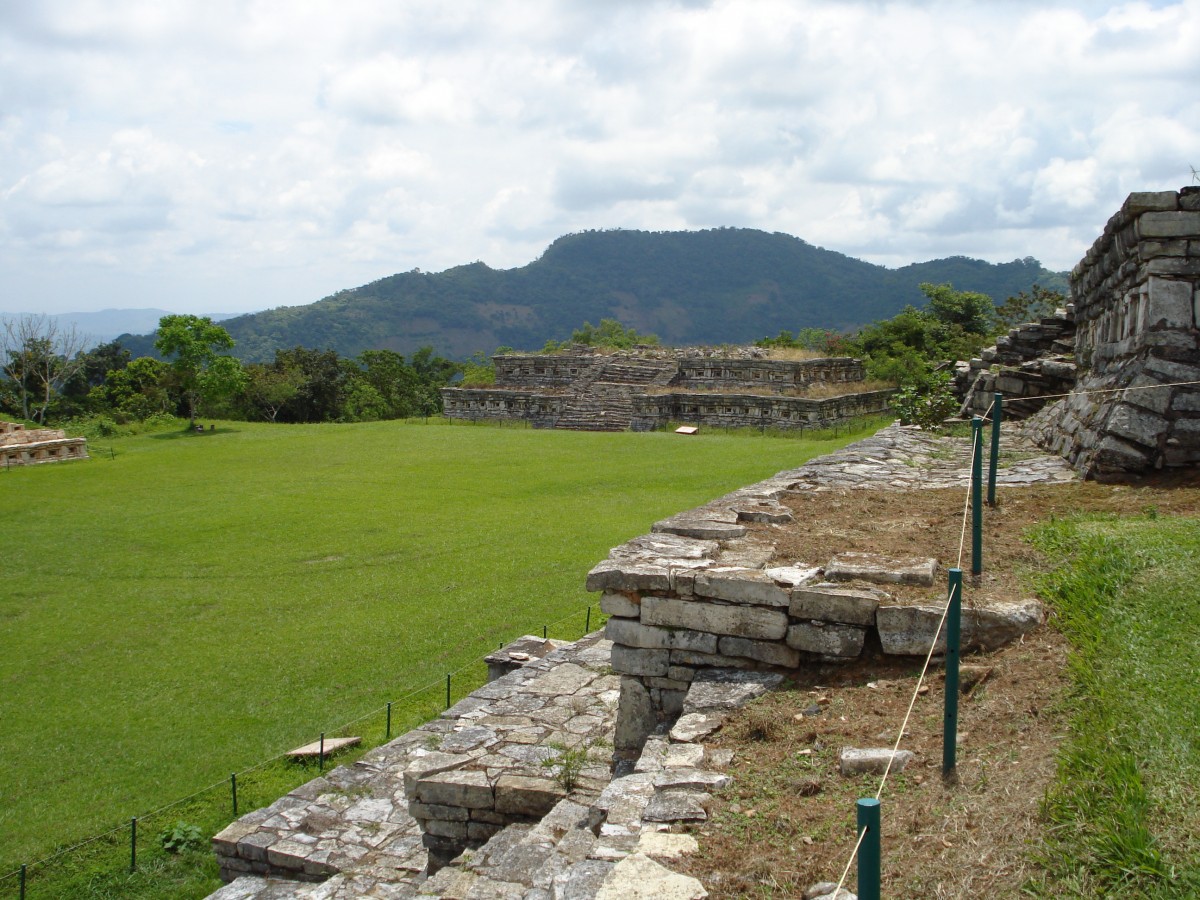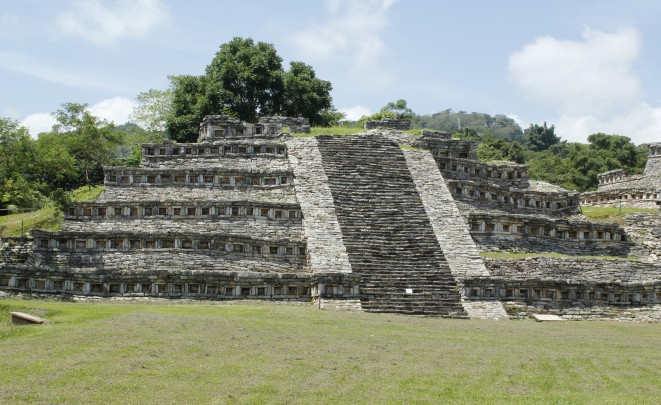Yohualichan
The house of the night
A Totonac settlement and important ceremonial center established high in the Sierra Madre. Notable for its monumental architecture with the characteristic niches of the region. Its ballcourt is one of the largest in Mesoamerica.
About the site
This Totonac city was founded 1,800 years ago in the fertile lands of the region of Cuetzalan, in the present-day state of Puebla. The Totonacs occupied it until 800 AD, achieving a high level of development. They built extensive plazas - notably a square one - on top of natural platforms. They also built majestic pyramid structures, one of which surprises with its numerous niches, like the principal structure at El Tajín, and it has a ballcourt measuring nearly 330 feet long.
The original inhabitants were probably forced to abandon the site and go back to their place of origin in modern day Veracruz as the result of an invasion by Toltec peoples around 900. Subsequently, around 1200 a new Chichimec invasion conquered the place and the neighboring district, marking the start of a general decline, which continued until the arrival of the Spanish. The Nahua pochtecs (traders) called the place “the house of the night,” perhaps because of the numerous caves dotted around the district. This impressive city still holds many secrets from archeologists.
The original inhabitants were probably forced to abandon the site and go back to their place of origin in modern day Veracruz as the result of an invasion by Toltec peoples around 900. Subsequently, around 1200 a new Chichimec invasion conquered the place and the neighboring district, marking the start of a general decline, which continued until the arrival of the Spanish. The Nahua pochtecs (traders) called the place “the house of the night,” perhaps because of the numerous caves dotted around the district. This impressive city still holds many secrets from archeologists.
Map
Did you know...
- In the course of the history of Yohualichan, The Tomb has been used for many purposes, including as an ammunition store in the nineteenth century insurgent struggle, and as a prison in certain decades of the twentieth century.
- Although this region was a producer of stone carvings, such as yokes, axes and votive palms, no markers or hoops associated with the ball game have been found. It does not mean they did not exist, rather they would have been made from perishable materials.
- The extraordinary acoustics of the Main Plaza make it possible to hear sounds perfectly from the Lookout or the Bell Tower Plaza. This was especially useful in bygone times when it was the community’s meeting place.
- The buildings around the Main Plaza are perfectly aligned with the four points of the compass.
- The air can be heard whistling through the niches on days when there is a strong north wind.
Practical information
Tuesday to Saturday from 10:00 to 17:00 hrs.
$75.00 pesos
Se localiza en el municipio de Cuetzalan del Progreso a 165 kilómetros de la ciudad de Puebla, en la subprovincia de Carso Huasteco de la Sierra Madre Oriental.
From Puebla, take Highway 140D to Xalapa, then Highway 129D to Teziutlán and then Highway 129 to Cuetzalan. The archeological zone is a little further on.
-
+52 (222) 235 4056
-
This email address is being protected from spambots. You need JavaScript enabled to view it.
-
TWITTER
Directory
Coordinador Administrativo de la Zona Arqueológica
David Sandino Cuevas Mera
This email address is being protected from spambots. You need JavaScript enabled to view it.
+52 (222) 235 1478

